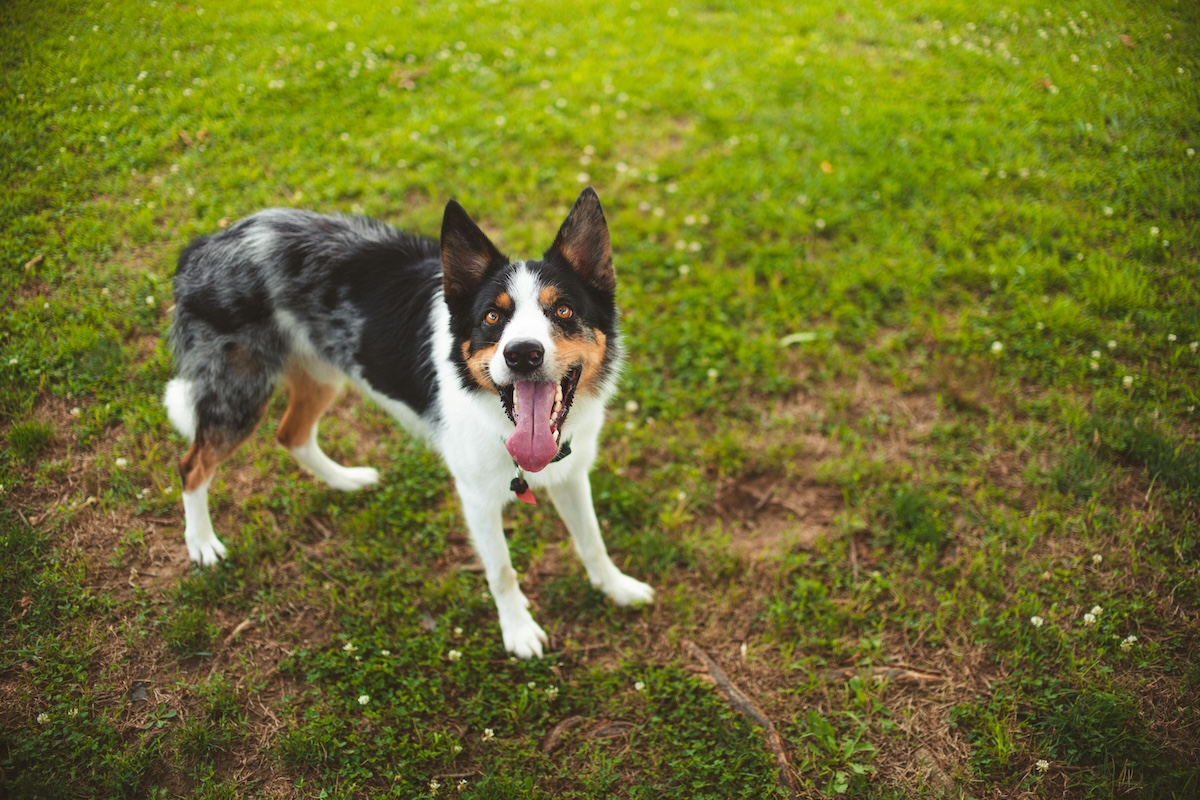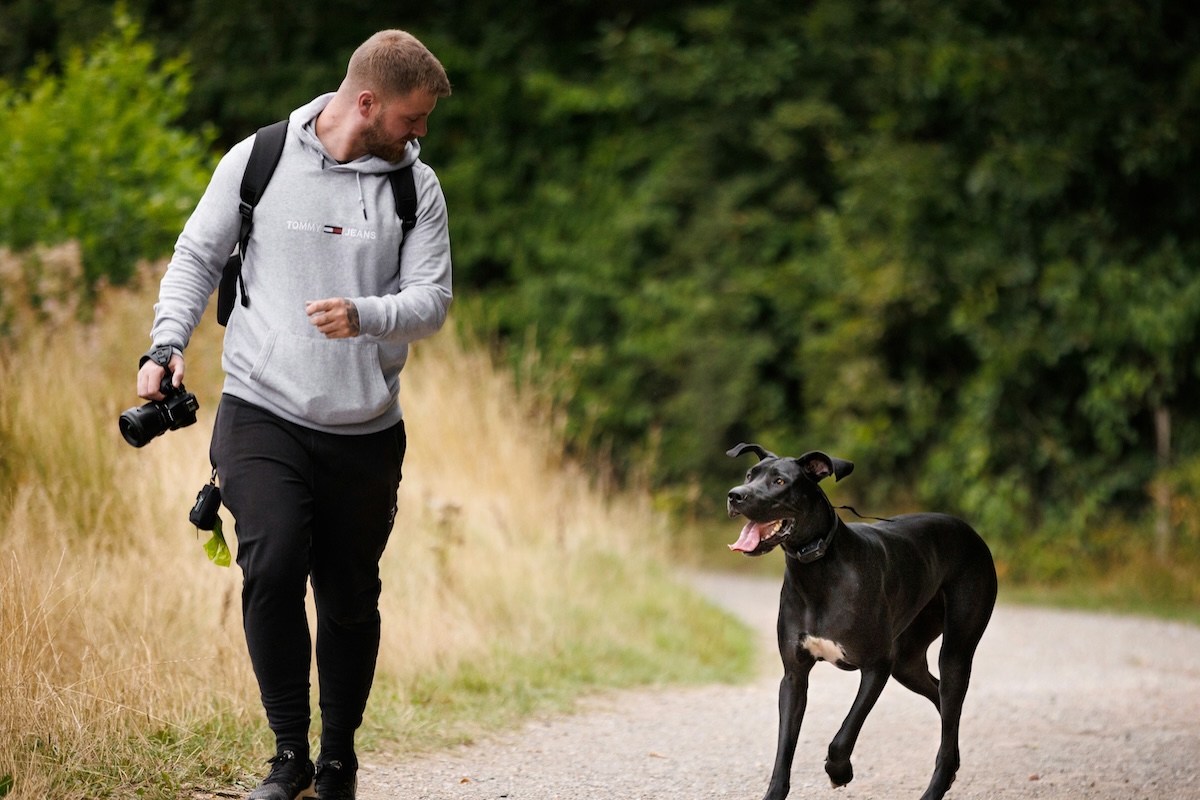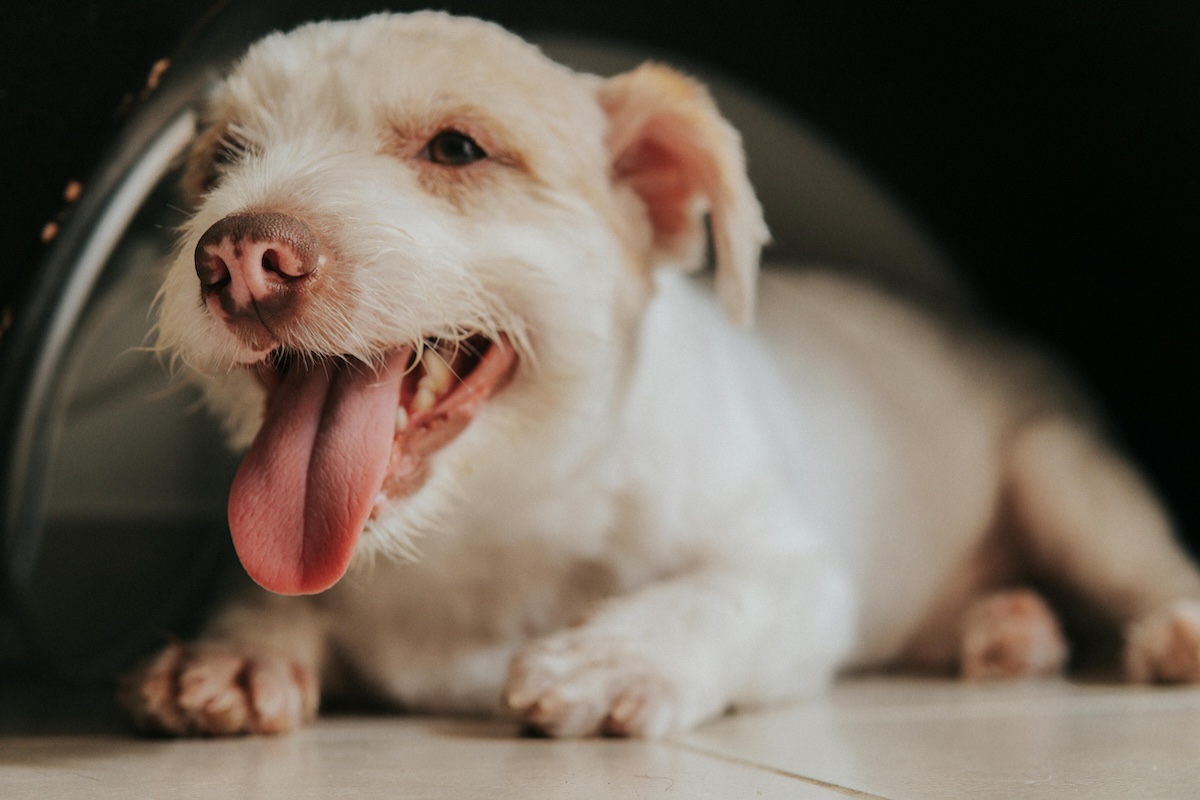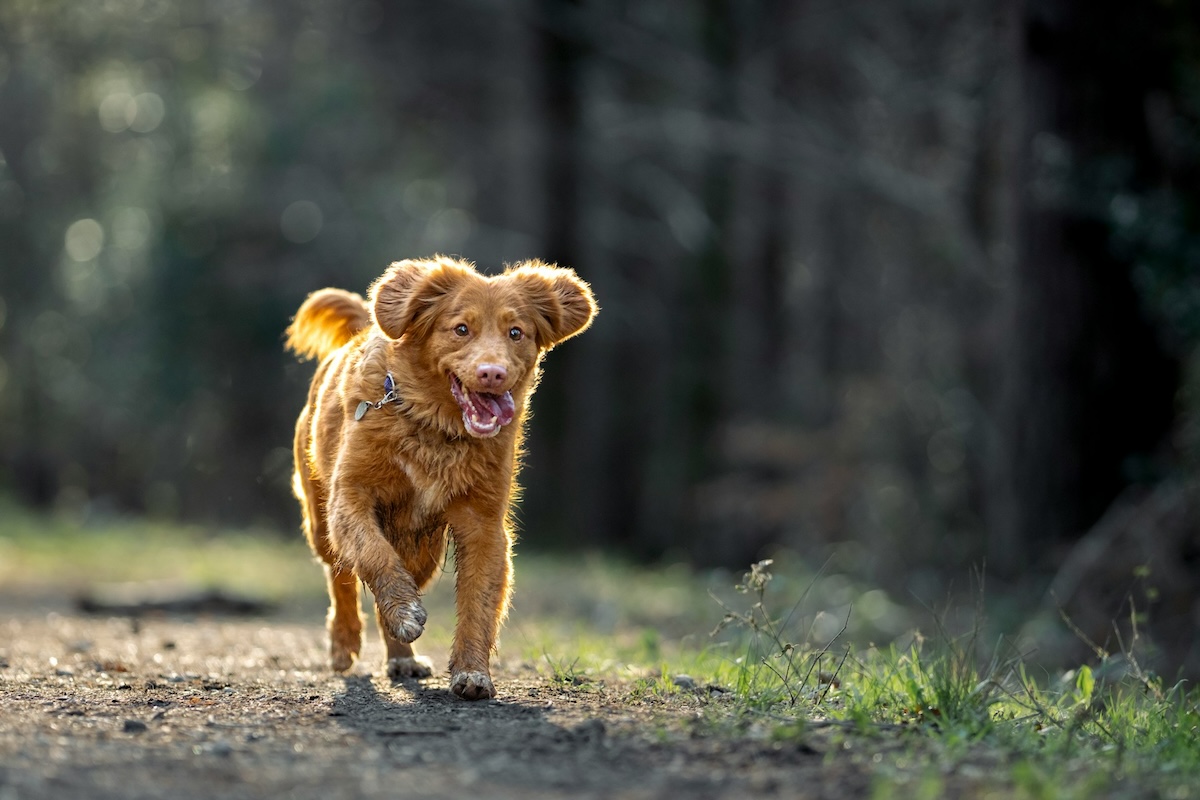“Never let them see you sweat” is standard advice when the going gets tough. However, you may never have seen your dog sweat — and not because they’re trying to keep calm and carry on even if your work schedule changes. However, just because you don’t see a dog sweating doesn’t mean they aren’t.
Do dogs sweat? The short answer is yes, dogs sweat, even if you likely don’t notice when they do. Like humans, canines sweat during and after exercise, in hot environments, and when they’re stressed. However, dogs sweat differently than humans. Here’s what to know about dog sweat and when to be concerned. We’ll also share critical tips on how else to keep your dog safe in hot weather when sweat may not be enough.
Do dogs sweat?

Dogs sweat, but their physiological process does not precisely mirror a human’s. Dogs have a pair of sweat glands:
- Merocrine glands. These glands are situated on a dog’s paw pads and function similarly to a person’s sweat glands. The paw pads are one of the primary places a dog sweats to cool off.
- Apocrine glands. Here’s where things get a bit hairy. The apocrine glands are deep within a dog’s skin and all over their body. Your pet sweats through them, but not to stay cool. Instead, dogs release natural scents through these glands. Other dogs use these scents to identify your dog — remember, canines’ noses are more powerful than people’s.
Dog sweat: How much is too much?

Sometimes, a person sweats too much and learns it’s a sign of a medical condition called hyperhidrosis. We don’t know whether dogs can have the same condition. However, excessive sweating in dogs could be a sign of stress. We’re not sure why dogs get super sweaty, particularly in the paw region, when they are anxious, but the reason could be evolutionary. (Sweaty paws may improve traction to make a life-saving escape). Regardless, you’ll want to flag concerns about your pet’s physical and emotional well-being with their vet.
OK, but you were today years old when you learned your dog could sweat in the first place. How do you know if they are perspiring too much? Touch your dog’s paw. Does the area feel extra moist? Ensure you’re in a cool location and haven’t been in the heat or in a situation in which your dog overexerted themselves, such as during a jog or rowdy play session. If the answer is yes, try again another time. Call your vet if you continue to notice your dog is excessively moist underneath the paw pads, as your dog may be chronically sweating more than usual.
How else can dogs keep cool?

Dogs can experience heat exhaustion, so staying cool is essential. Your pet has some natural ways of handling heat, and you can also help keep them safe.
Natural ways a dog cools off
Besides sweating, the canine body has some built-in ways to regulate body temperature.
The first is the one you may be most familiar with: Panting. Panting is actually the number one way dogs keep their body temperature at a safe level. Dogs have moist tongues. When they open their mouths to pant, that moisture and the moisture in their lung lining evaporate. This combination helps them cool down.
You may think, “Wait, if the moisture evaporates, doesn’t it disappear?” Yes, but the same goes for sweat on humans. The evaporation of our perspiration is part of the process that helps us keep our body temperature low, even if the mercury is nearing triple digits outside.
The other way dogs keep their body temperatures safe is through vasodilation or the expansion of blood vessels. Hot blood gets closer to the surface of a dog’s skin and cools it off, lowering a pet’s total body temperature.
Other ways to keep your pet safe in the heat
Your dog’s body does an excellent job staying cool, but your pet may need extra protection. Keep them safe by:
- Not leaving them in a hot car
- Keeping your home between 68 and 78 degrees Fahrenheit
- Providing plenty of water
- Staying inside during the hottest parts of the day
- Remaining in the shade if you’re out in the heat
- Recognize the signs of heat exhaustion (heavy/rapid panting, excessive drooling, coordination issues, loss of consciousness, and red gums).
Call a vet if you’re concerned about your pet.
Closing thoughts

You may not notice your dog sweating, but they can. Dogs primarily sweat through their paw pads to stay cool and due to stress. They also have glands deep within their skin that they use to release identifying scents for other dogs.
Your pet has other ways to stay cool naturally, including panting. However, you can help them on hot days by providing plenty of water, shade, and air conditioning. Dogs can have heat exhaustion. Keep them out of locked, unattended vehicles and know the signs, such as coordination difficulties and excessive drooling. Call the vet if you are concerned about excessive sweating or heat exhaustion.




